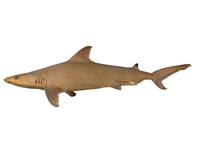Abstract
Ghost shrimps of the family Callianassidae are very common in the fossil record, but mostly as isolated cheliped elements only. The assignment to biologically defined genera, diagnosed on the basis of soft part morphology, is thus rather difficult. In this respect, proxy characters present on chelipeds that are the most durable ghost shrimp remains are needed to ascribe fossil material to extant genera. The genus Calliax de Saint Laurent, 1973 has been particularly obscure in this respect. Thorough comparison of extant members of the genus resulted in evaluation of characters present on chelipeds being taxonomically important on the genus level, specifically: 1) rectangular major P1 propodus with two ridges on the base of the fixed finger extending onto manus; 2) major P1 fingers relatively short; and 3) minor P1 chela with dactylus longer than fixed finger and possessing a wide gap between fingers. On this basis, Callianassa michelottii A. Milne Edwards, 1860, from the Oligocene and Miocene of Europe is herein reassigned to Calliax. Further re-examination of the ghost shrimp fossil record revealed that C. szobensis Müller, 1984, from the Middle Miocene of Hungary represents the same animal as C. michelottii and they are synomymised herein. The known geographic distribution of C. michelottii is expanded by the first confirmed occurrence of the species in Slovakia. All occurrences of C. michelottii known to date are reviewed and documented. The presence of Calliax michelottii comb. nov. may be considered an indicator of deeper marine settings. Based on the scarce fossil record known to date, Calliax has a Tethyan origin; it supposedly migrated westward to establish present day communities in the Caribbean sometime before the Middle Miocene.

